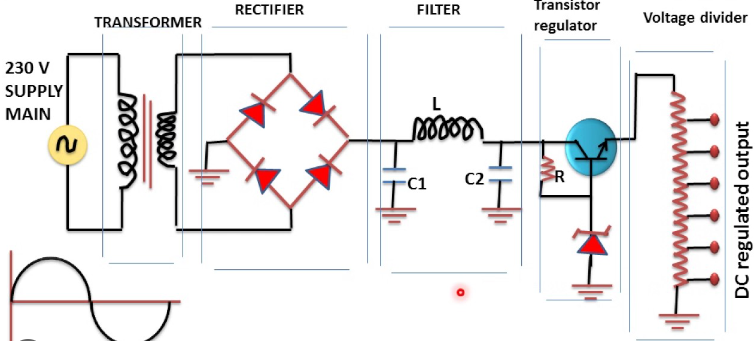
In the realm of electronics, a stable and reliable power source is imperative for the smooth functioning of various devices and circuits. Among the array of power sources available, the DC regulated power supply stands as a fundamental component, providing consistent and controlled direct current (DC) to power electronic systems. This comprehensive guide aims to delve into the intricacies of DC regulated power supplies, covering their functionalities, types, working principles, applications, advantages, and considerations for optimal usage.
What is a DC Regulated Power Supply?
A DC-regulated power supply is an electronic circuit designed to convert an alternating current (AC) voltage to a stable, regulated DC voltage. Its primary function is to provide a constant, controlled output voltage despite fluctuations or variations in the input voltage or load conditions.
Working Principles of DC Regulated Power Supplies
The basic components of a DC regulated power supply typically include a transformer, rectifier, filter, voltage regulator, and output stage. Here’s a breakdown of how these components work together:
Transformer: The input AC voltage is stepped down or up using a transformer to achieve the desired voltage level for further processing.
Rectification: The AC voltage is converted into pulsating DC using diodes arranged in a bridge or full-wave rectifier configuration. This conversion eliminates the negative portion of the AC waveform, producing a unidirectional pulsating voltage.
Filtering: A filter capacitor or an LC (inductor-capacitor) network is used to smoothen the pulsating DC voltage, reducing ripples and fluctuations, resulting in a relatively stable but unregulated DC output.
Voltage Regulation: The regulated DC voltage is achieved using a voltage regulator circuit that maintains the output voltage within a specified tolerance despite variations in load or input voltage. This can be achieved through various types of regulators such as linear regulators (like LM317) or switching regulators (like buck, boost, or buck-boost regulators).
Output Stage: The final stage ensures the delivery of the stable, regulated DC voltage to the load or electronic circuit.
Types of DC Regulated Power Supplies
Linear Regulated Power Supplies: These are simpler in design and utilize linear voltage regulators to maintain a constant output voltage. They are known for their low output ripple and noise but are less efficient, especially when the input voltage significantly exceeds the required output voltage.
Switched-Mode Power Supplies (SMPS): SMPS employ switching regulators to regulate the output voltage. They are highly efficient, compact, and suitable for a wide range of input voltages but may introduce higher levels of noise or electromagnetic interference.
Applications of DC Regulated Power Supplies
DC regulated power supplies find extensive applications in various fields, including:
Electronics Labs and Workshops: They serve as stable power sources for testing and prototyping electronic circuits and devices.
Industrial and Manufacturing Processes: Used to power control systems, motors, sensors, and other electronic equipment in industrial settings.
Telecommunications: Providing stable power to telecom equipment and network infrastructure.
Medical Devices: Powering critical medical equipment requiring precise and stable voltages for accurate operation.
Advantages of DC Regulated Power Supplies
Stability and Reliability: They offer stable output voltages, crucial for sensitive electronic circuits and devices.
Protection: Regulated power supplies often include protection circuits against overvoltage, overcurrent, and short circuits, safeguarding both the power supply and the connected devices.
Precise Output: With their regulated output, these power supplies provide precise voltage levels, essential for accurate and consistent operation in various applications.
Considerations for Optimal Usage
Load and Voltage Requirements: Select a power supply that meets the specific voltage and current requirements of the load or circuit being powered.
Efficiency and Heat Dissipation: Consider the efficiency of the power supply, especially in high-power applications, and ensure proper heat dissipation to prevent overheating.
Noise and Interference: Evaluate the level of noise or electromagnetic interference generated by the power supply, especially in sensitive applications where clean power is essential.
Conclusion
In the ever-evolving landscape of electronics, the DC regulated power supply stands as a cornerstone, providing a stable and reliable source of power for a myriad of devices and circuits. Understanding its working principles, types, applications, and considerations for optimal usage is crucial for engineers, hobbyists, and professionals alike. With its ability to deliver consistent and controlled DC voltages, the regulated power supply remains an indispensable component in the realm of electronic design and innovation.
